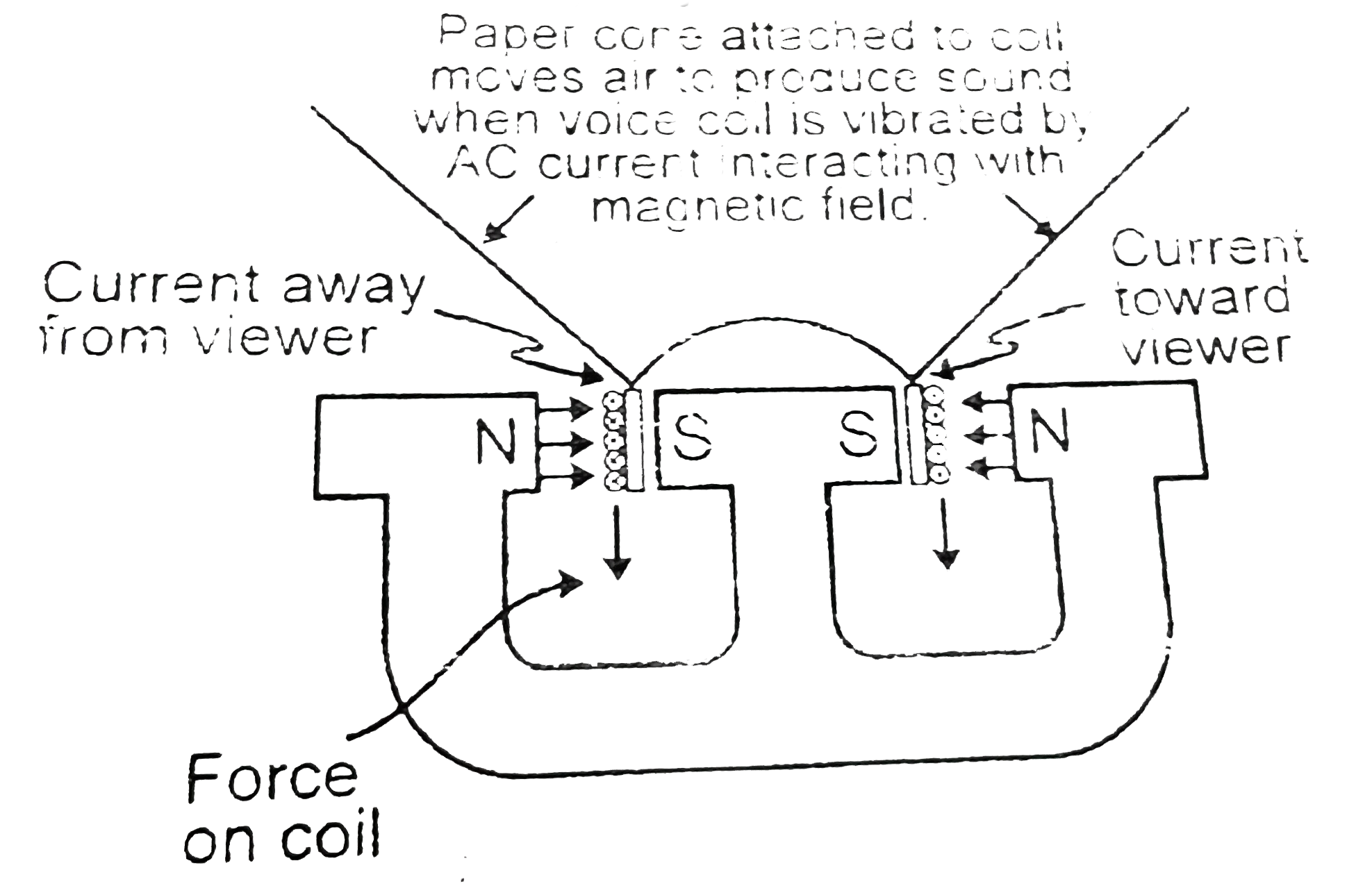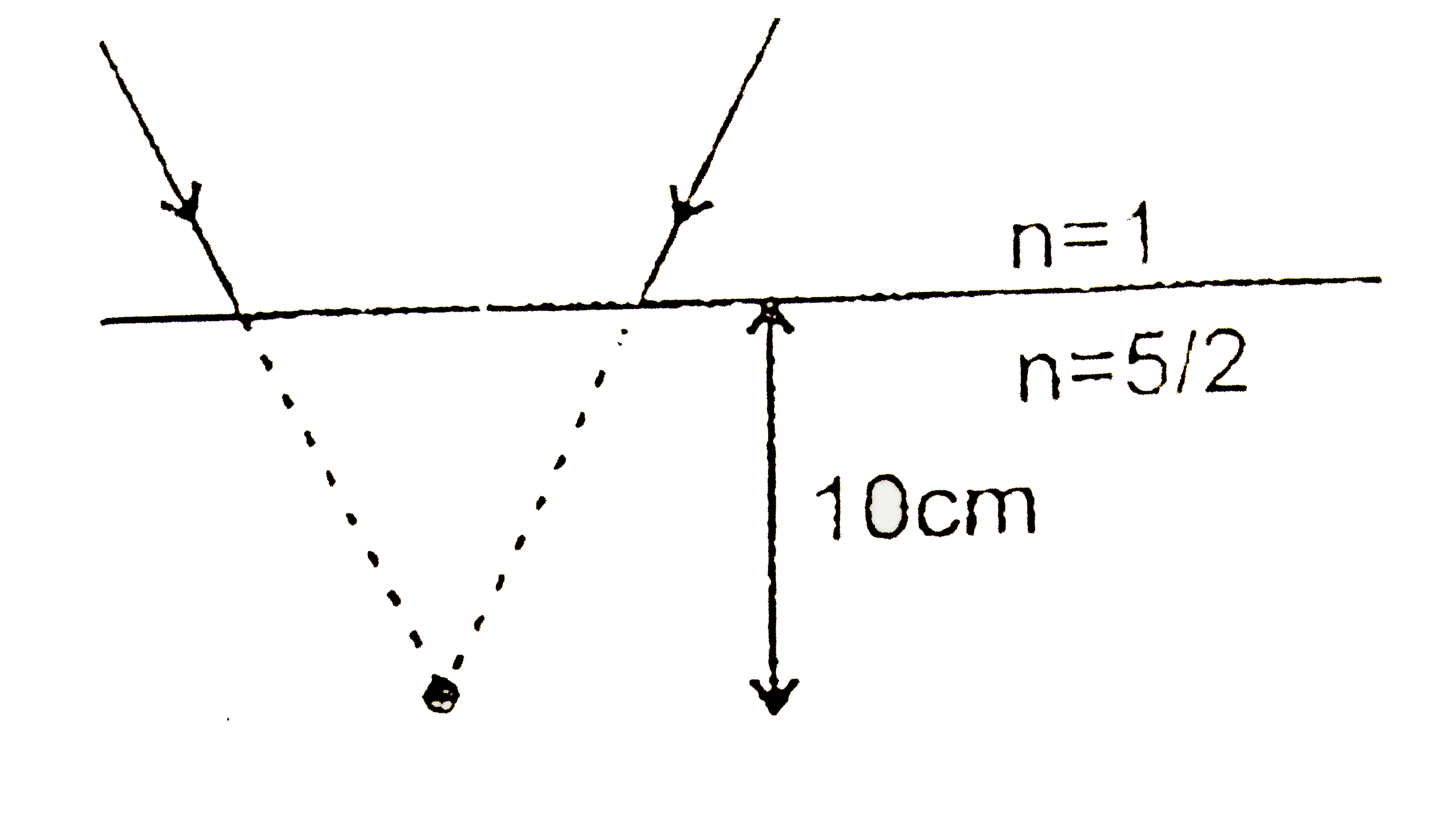The luminous intensity of a small plane source of light along the forward normal is 160 candela. Assume the source to be perfectly diffused, find the luminous flux emitted into a cone of solid angle 0.02 sr around a line making an angle of 60∘ with the forward normal.

The situation is shown in ure. By Lambert's cosine law, intensity in the direction SB is
I=I0cos60∘
Where eI0=160 candela is the intensity along the forward normal
ThusI=(160candela)(12)
=80 candela.
The luminous flux emitted in the cone shown in the ure is
△f=I△ω
=(80candela)(0.02sr)
=1.6 lumen.
Topper's Solved these Questions
- PHOTOMETRYBOOK - HC VERMACHAPTER - PHOTOMETRYEXERCISE - Objective 1
11 Videos
- PHOTOMETRYBOOK - HC VERMACHAPTER - PHOTOMETRYEXERCISE - Objective 2
4 Videos
- PHOTOMETRYBOOK - HC VERMACHAPTER - PHOTOMETRYEXERCISE - Worked Out Examples
4 Videos
- PHOTO ELECTRIC EFFECT AND WAVE PARTICLE DUALITYBOOK - HC VERMACHAPTER - PHOTO ELECTRIC EFFECT AND WAVE PARTICLE DUALITYEXERCISE - Exercise
2 Videos
- SEMICONDUCTOR AND SEMICONDUCTOR DEVICESBOOK - HC VERMACHAPTER - SEMICONDUCTOR AND SEMICONDUCTOR DEVICESEXERCISE - exercises
35 Videos
Similar Questions
A small plane source of light has illuminating power of 150 cd along the direction of forward normal. If the source is perfectly diffused, find the luminous flux emitted into a cone of solid angle 0.02 sr around a line making an angle of 60∘ with the forward normal.
View SolutionCalculate the intensity of illumination at a distance of 0.5m from a source of light of power 200 candela assuming normal incidence.
View Solution
Knowledge Check
Components of loudspeaker :
A loudspeaker consists of permanent magnets, basket, voice cails, flexible supension & rigid speaker cone as shown in figure.

Loudspeaker principle
A light voice coil is mounted so that it can move freely inside the magnetic field of a strong permanent magnet. the paper cone is attached to the voice coil and attached with a flexble mounting to the outer ring of the support .Because there is a definite equilibrium position for the speaker cone and there is elasticity of the mounting structure, there is inevitably a free cone resonant frequency like of a mass on a spring. The frequency can be determined by adjusting the mass and stiffness of the cone and voice coil

Working :
The ratio drives a rapidly changing current through the coil. The current follows that vibrations of speech and the electromagnetic force follows the current changes, pushing the paper cone. Finally the air in front of the loudspeaker is set into vibration following the cone's motion, and sound waves are transmitted to the listener
A voice coil in a loudspeaker has 40 turns of wire and loop-diameter 1 cm and the current in the coil is 1A. Assume that the magnetic field at each at the wire of the coil has constant magnitude 0.2 T and is directed at an angle 60∘ from the normal to the plane of the coil as shown in figure. The magnitude and direction of magnetic force on the coil is
 A4π×10−2N,+yB4π×10−2N.−yC4√3π×10−2+yD4√3π×10−2N,−y
A4π×10−2N,+yB4π×10−2N.−yC4√3π×10−2+yD4√3π×10−2N,−yPhotometry:
The measurement of light as perceived by human eye is called photometry. Photometry is measurement of a physiological phenomenon, being the stimulus of light as received by the human eye, transmitted by the optic nerves and analysed by the brain. The main physical quantities in photometry are (i) the luminous intensity of the source, (ii) the luminous flux or flow of light from the source and (iii) illuminance of the surface. The SI unit of luminous intensity (I) is candela (cd). The candela is the luminous intensity, in a given direction, of a source that emits monochromatic radiation of frequency 540×1012 Hz and that has a radiant intensity in that direction of 1/683 watt per steradian. If a light source emits one candela of luminous intensity into a solid angle of one steradian, the total luminous flux emitted solid angle is one lumen (1m). A standa o incandescent light bulb emits approximately 1700 lumens.
Unit of luminous flux is:ACandelaBSteradianCNitDLumenPhotometry:
The measurement of light as perceived by human eye is called photometry. Photometry is measurement of a physiological phenomenon, being the stimulus of light as received by the human eye, transmitted by the optic nerves and analysed by the brain. The main physical quantities in photometry are (i) the luminous intensity of the source, (ii) the luminous flux or flow of light from the source and (iii) illuminance of the surface. The SI unit of luminous intensity (I) is candela (cd). The candela is the luminous intensity, in a given direction, of a source that emits monochromatic radiation of frequency 540×1012 Hz and that has a radiant intensity in that direction of 1/683 watt per steradian. If a light source emits one candela of luminous intensity into a solid angle of one steradian, the total luminous flux emitted solid angle is one lumen (1m). A standa o incandescent light bulb emits approximately 1700 lumens.
The SI unit of luminous intensity is:ADioptreBSteradianCCandelaDLumen
In the given figure rasy incident on an interface would converge 10cm below the interface if they continues to move in straight lines without bending. But due to refraction, the rays will bend and meet some where else. Find the distance of meeting point of refracted rasy below the interface, assuming the rays to be making small angles with the normal to the interface.

View Solution(i) A source of sound emits waves of frequency f0=1200Hz. The source is travelling at a speed of v1=30m/s towards east. There is a large reflecting surface in front of the source which is travelling at a velocity of v2=60m/s towards west. Speed of sound in air is v=330m/s.
(a) Find the number of waves arriving per second at the reflecting surface.
(b) Find the ratio of wavelength (λ1) of sound in front of the source travelling towards the reflecting surface to the wavelength (λ2) of sound in front of the source approaching it after getting reflected.
(ii) A sound source (S) and an observer (A) are moving towards a point O along two straight lines making an angle of 60∘ with each other. The velocities of S and A are 18ms–1 and 12ms–1 respectively and remain constant with time. Frequency of the source is 1000Hz and speed of sound is v=330ms–1.
(a) Find the frequency received by the observer when both the source and observer are at a distance of 180 m from point O (see figure). (b) Find the frequency received by the observer when she reaches point O.
View SolutionPhotometry:
The measurement of light as perceived by human eye is called photometry. Photometry is measurement of a physiological phenomenon, being the stimulus of light as received by the human eye, transmitted by the optic nerves and analysed by the brain. The main physical quantities in photometry are (i) the luminous intensity of the source, (ii) the luminous flux or flow of light from the source and (iii) illuminance of the surface. The SI unit of luminous intensity (I) is candela (cd). The candela is the luminous intensity, in a given direction, of a source that emits monochromatic radiation of frequency 540×1012 Hz and that has a radiant intensity in that direction of 1/683 watt per steradian. If a light source emits one candela of luminous intensity into a solid angle of one steradian, the total luminous flux emitted solid angle is one lumen (1m). A standard 100 watt incandescent light bulb emits approximately 1700 lumens.
A standard 100 watt incandescent light bulb emits approximately:
View SolutionPhotometry:
The measurement of light as perceived by human eye is called photometry. Photometry is measurement of a physiological phenomenon, being the stimulus of light as received by the human eye, transmitted by the optic nerves and analysed by the brain. The main physical quantities in photometry are (i) the luminous intensity of the source, (ii) the luminous flux or flow of light from the source and (iii) illuminance of the surface. The SI unit of luminous intensity (I) is candela (cd). The candela is the luminous intensity, in a given direction, of a source that emits monochromatic radiation of frequency 540×1012 Hz and that has a radiant intensity in that direction of 1/683 watt per steradian. If a light source emits one candela of luminous intensity into a solid angle of one steradian, the total luminous flux emitted solid angle is one lumen (1m). A standa o incandescent light bulb emits approximately 1700 lumens.
Light received by human eye is analysed by:
View SolutionPhotometry:
The measurement of light as perceived by human eye is called photometry. Photometry is measurement of a physiological phenomenon, being the stimulus of light as received by the human eye, transmitted by the optic nerves and analysed by the brain. The main physical quantities in photometry are (i) the luminous intensity of the source, (ii) the luminous flux or flow of light from the source and (iii) illuminance of the surface. The SI unit of luminous intensity (I) is candela (cd). The candela is the luminous intensity, in a given direction, of a source that emits monochromatic radiation of frequency 540×1012 Hz and that has a radiant intensity in that direction of 1/683 watt per steradian. If a light source emits one candela of luminous intensity into a solid angle of one steradian, the total luminous flux emitted solid angle is one lumen (1m). A standa o incandescent light bulb emits approximately 1700 lumens.
What is photometry?
View Solution
